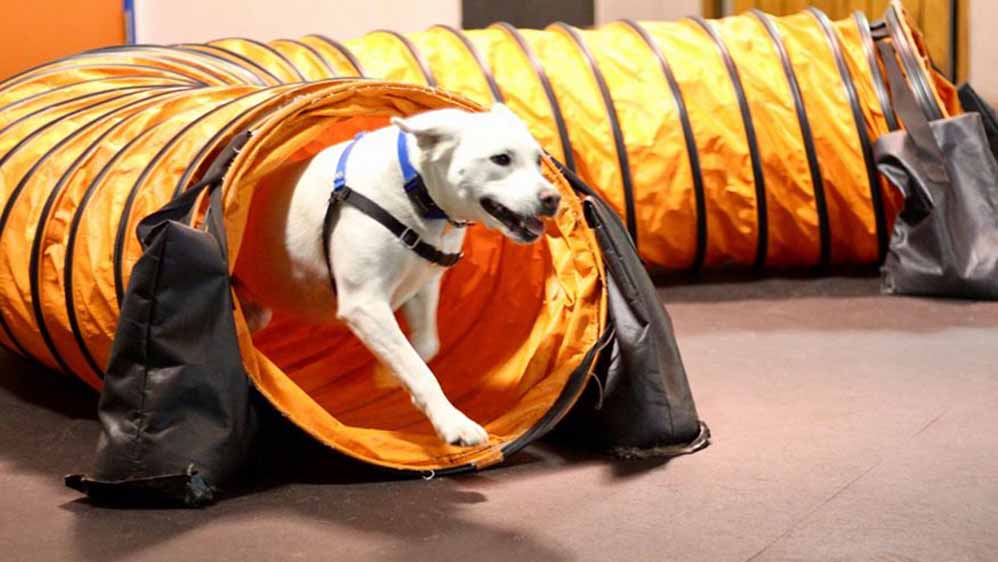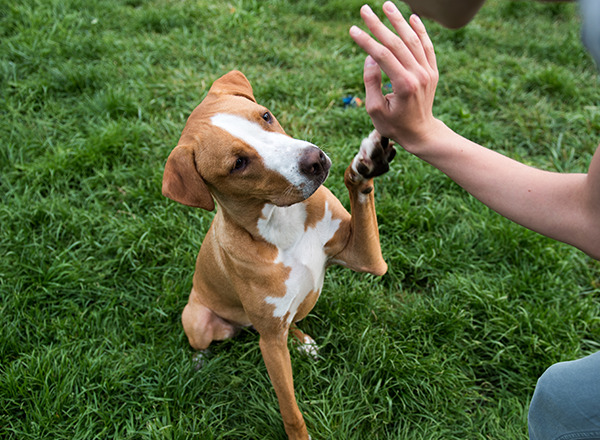Exactly How to Incorporate Games right into Your Dog Training Regimen
Exactly How to Incorporate Games right into Your Dog Training Regimen
Blog Article
Vital Tips for Effective Dog Training: An Overview for Family Pet Owners
Effective pet training is a diverse procedure that needs a tactical approach customized to both the animal's character and the owner's objectives. Trick parts such as developing regular commands, utilizing positive reinforcement, and promoting early socialization play critical roles in fostering a well-adjusted canine companion. Nevertheless, numerous family pet owners encounter obstacles that can prevent development, leading to aggravation and uncertainty. Comprehending just how to navigate these challenges can significantly boost the training experience, eventually changing the relationship in between proprietor and pet dog. What are the vital approaches that can be used to make certain success in this undertaking?
Comprehending Dog Habits
Comprehending dog habits is vital for efficient training and fostering a harmonious partnership between dogs and their proprietors. dog training. Pets connect largely through body language, articulations, and activities, making it important for proprietors to analyze these signals accurately.

Socialization plays a considerable role in canine habits; exposure to different settings, people, and other animals can considerably impact a dog's temperament. Elements such as type characteristics and private temperament need to guide training methods, as some breeds may have particular behavioral traits that require tailored techniques. By understanding these components, owners can develop an encouraging setting that encourages positive actions, bring about successful training results and a much deeper bond with their pet dogs.
Developing Consistent Commands
Reliable communication with your dog begins with establishing regular commands. This foundational element of training is critical for fostering understanding in between you and your pet dog. Consistency in the commands you make use of makes sure that your canine can reliably link particular words or expressions with the wanted habits.
When picking commands, choose clear, distinct words that are very easy to say and differentiate from each other. Stay clear of using similar-sounding commands that might confuse your canine. Using "rest" and "remain" is ideal, but "sit" and "hit" can lead to misunderstandings.
In addition, preserve the exact same tone and quantity for every command. Pets are sensitive to vocal cues, so differing your tone can create confusion.
It is just as vital to make certain that all family members get on the exact same page concerning the commands used. A united front in command usage will prevent mixed signals and enhance the learning procedure.
Favorable Support Methods
The power of favorable support in pet dog training depends on its ability to encourage preferred habits via incentives and praise. This strategy is grounded in the principle that behaviors adhered to by desirable end results are more probable to be repeated. By including positive reinforcement into your training routine, you can successfully shape your pet dog's actions in a useful manner.
To carry out positive support, it's vital to determine what motivates your pet dog, whether it be deals with, toys, or spoken appreciation. When your pet dog performs a preferred activity, such as resting on command, immediately compensate them with a treat or love. This organization between the command and the favorable outcome reinforces their understanding.
It's important to timing the rewards correctly; providing the support within secs of the preferred behavior assists your dog make the connection (dog training). Additionally, uniformity is key-- guarantee that all member of the family use the same commands and reward systems to prevent complication

Progressively, you can reduce the frequency of treats as your dog finds out the behavior, transitioning to praise or periodic benefits. This technique not only promotes a strong bond between you and your pet dog yet additionally promotes a positive discovering setting, making educating an enjoyable experience for both.
Socialization and Interaction
Constantly exposing your dog to sites a variety of environments, people, and other animals is important for their social advancement. Socializing must begin early, ideally during the vital window of 3 to 14 weeks, when young puppies are most receptive to brand-new experiences. Older canines can also benefit from recurring socializing initiatives.
Introduce your dog to various setups, such as parks, pet-friendly shops, and metropolitan areas. This exposure helps them adapt to various stimulations, lowering stress and anxiety and anxiety actions. Motivate positive communications with various other pets and individuals, making certain that these experiences are risk-free and controlled to foster confidence.
Utilize organized playdates with genteel dogs, as this can boost your pet dog's social skills and show them appropriate actions. Obedience courses and training sessions also give superb chances for socialization, permitting your dog to communicate with others in a monitored atmosphere.
Monitor your canine's body movement during communications, as this will assist you evaluate their comfort degree. Gradually enhance direct exposure additional hints to more difficult scenarios while making sure that each experience is positive. A well-socialized pet is most likely to exhibit balanced actions, making them a delight to have in any setup.
Addressing Typical Training Difficulties
Every pet owner will come across training obstacles at some point, no matter their pet dog's age or socializing level. Recognizing common problems such as stubbornness, disturbances, and terror can help in creating efficient methods for renovation.

Slowly introduce interruptions as the canine becomes more competent in commands. Short, frequent training sessions are additionally reliable in preserving attention.
Fearfulness can impede a dog's learning procedure. Progressive desensitization to the source of fear, coupled with favorable reinforcement, can help reduce anxiety. Perseverance is important; never ever compel a canine right into a scenario that triggers distress, as this may aggravate the concern.
Eventually, understanding and addressing these usual difficulties with an organized technique will foster a much more productive training experience, reinforcing the bond between pet and proprietor while promoting reliable understanding.
Final Thought
In recap, successful pet training counts on a comprehensive understanding of canine actions, the establishment of constant commands, and the application of positive reinforcement strategies. Socializing plays a vital role in establishing well-adjusted pets, while attending to usual training difficulties needs persistence and adaptability. By executing these important techniques, animal proprietors can foster a solid bond with their pet dogs and promote desirable actions, inevitably resulting in an unified partnership in between human beings and their canine companions.
Comprehending dog habits is important for efficient training and cultivating a harmonious relationship between dogs and their proprietors.Socialization plays a substantial duty in canine habits; direct exposure to various atmospheres, individuals, and various other pets can considerably affect a pet dog's temperament.The power of favorable support in pet training lies in its ability to encourage desired habits with benefits and appreciation. By including favorable support into your training routine, you can properly form your have a peek here pet's actions in a positive fashion.
In summary, successful canine training relies on an extensive understanding of canine habits, the establishment of consistent commands, and the application of favorable support strategies.
Report this page